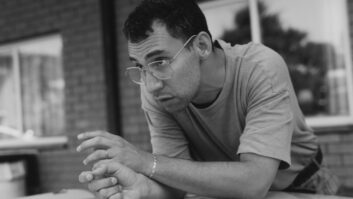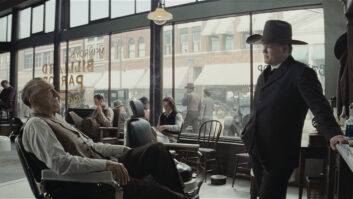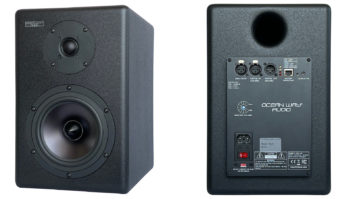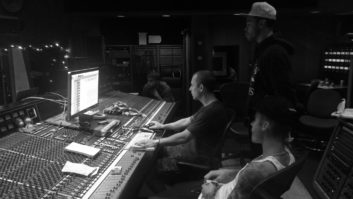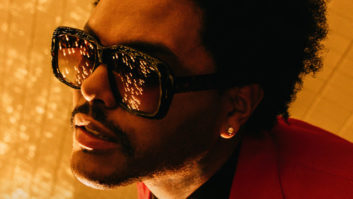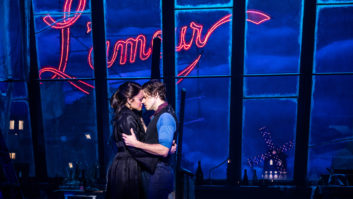
In her sultry, silken voice, jazz singer Cassandra Wilson has performed Billie Holiday songs before. It’s no surprise that she has just recorded a tribute to the late, great icon. The unexpected news about Wilson’s album Coming Forth by Day is that it was produced, engineered and mixed by Nick Launay, known for projects with rock artists such as Yeah Yeah Yeahs and Arcade Fire, and especially for producing goth-rock masterpieces by Nick Cave and the Bad Seeds.
“Cassandra’s manager, Ed Gerrard, asked if I’d be interested in working with her, which seemed unusual, but I love her voice and I was curious to meet her,” Launay says. “It turned out that she had heard Grinderman, Nick Cave’s other band. She loved the rawness of it.
“She said, ‘If I’m going to do a Billie Holiday cover album, I want it to be different from the way Billie Holiday did it,’” he continues. “The idea was to dive deeper into the lyrics and make an album that was not necessarily darker, but that had more of what we were calling a ‘David Lynch’ sound.”
Coming Forth by Day has jazz elements, but it’s infused with dark, atmospheric guitar effects and other strange, roomy qualities. It’s an unsettling but beautiful sonic combination that starts with the band Launay assembled.
“I was curious to see if any musicians from Nick Cave’s band would be into doing it,” he says. “It appealed to me enormously to get that rhythm section, because Bad Seeds drummer, Thomas Wydler, has a wonderful swinging style, and the bass player, Martyn Casey, is influenced by Motown and Stax but also plays with a dub/reggae feel. I wanted it to groove and have a powerful low end.”
The Bad Seeds members were on board immediately, and Wilson’s piano player, Jon Cowherd, and guitarist, Kevin Breit, joined them. “Jon is an unbelievable player; he understood what we were trying to do, and he has been playing Billie Holiday songs for some time,” Launay says. “Kevin is also great with feel and textures; he’s quite experimental. A lot of the stranger noises you hear from loops and delay pedals on the album are his.
“But I still had a problem to solve,” he adds. “On Billie Holiday’s recordings, there’s always a strong instrumental melody played by a reed and brass instrument that happens between her vocal lines. Songs usually start with an intro that has that melody, and then it comes back.”

Launay sought instrumentation advice from Van Dyke Parks, who also created some of the string arrangements for Coming Forth by Day; Parks said that Launay needed a bass clarinet or sax player, and recommended Robby Marshall. And to Launay’s astonishment, Marshall and all of the other musicians were able to synchronize schedules. They convened in Seedy Underbelly, a semi-private L.A. studio where Launay often works.
“There was incredible enthusiasm, but we had no plan for the arrangements,” Launay recalls. “The idea was they would jam these songs until something great started happening. I would find myself saying to the drummer and bass player, ‘Make it sound more like Massive Attack,’ because I really like their dark grooves. As soon as they started doing something darker with a more sexual groove, then everything worked on top of it. Thomas would play these tribal tom rhythms and Cassandra would get really into it, and everyone would play off of her vocals. I would say 80 percent of the vocals are from her singing live and the musicians playing off her.”

Launay captured the sessions to Pro Tools, as many of the basics consisted of long jams that he would later edit and shape into songs. Most of the musicians were situated in one large living room-style tracking room, but Wydler’s drums were in a booth, as was Wilson. Launay also placed the bass amp in a booth, though Casey played in the room.
“The piano was in the middle of the main room, but dampened with lots of blankets, with two AKG C12s inside, so the sound would be contained,” Launay says.

A vintage C12 also served as Wilson’s vocal mic, which went to a Neve 1081 mic pre/EQ, and then into a Tube-Tech CL-1A compressor.
Breit’s guitar amp—often a Carr Mercury, but there were also a Fender Tweed and Vox AC 30 on the sessions—was miked with a Beyer M 88 and an AKG 414. “I also had a distant mic, usually an RCA 44,” Launay says. “He also had lots of pedals, loop machines and other equipment.
“We had other guitar players come down also. Kevin plays the most, but Nick Zinner from the Yeah Yeah Yeahs played on ‘Strange Fruit’ and did some overdubs. We also had Ming Vauz, who is a very left-of-center, experimental guitarist. He added a lot of atmospheric sounds that don’t sound like guitars.”

Still more guitar parts were added by Wilson’s friend and previous producer T Bone Burnett. “Our tastes definitely cross over,” Launay says of Burnett. “We share a passion for twangy, low baritone guitars and Ennio Morricone music.
“Robby’s bass clarinet and sax were also in the room. He used a [Neumann] M 49 and also an RCA 77. I really like ribbons on horns and woodwinds because it sounds old-fashioned, and I wanted to capture that. That melodic part is such an important part of those original songs, and I wanted the album to sound just a little bit like an old record, like a Billie Holiday record in tone.”
